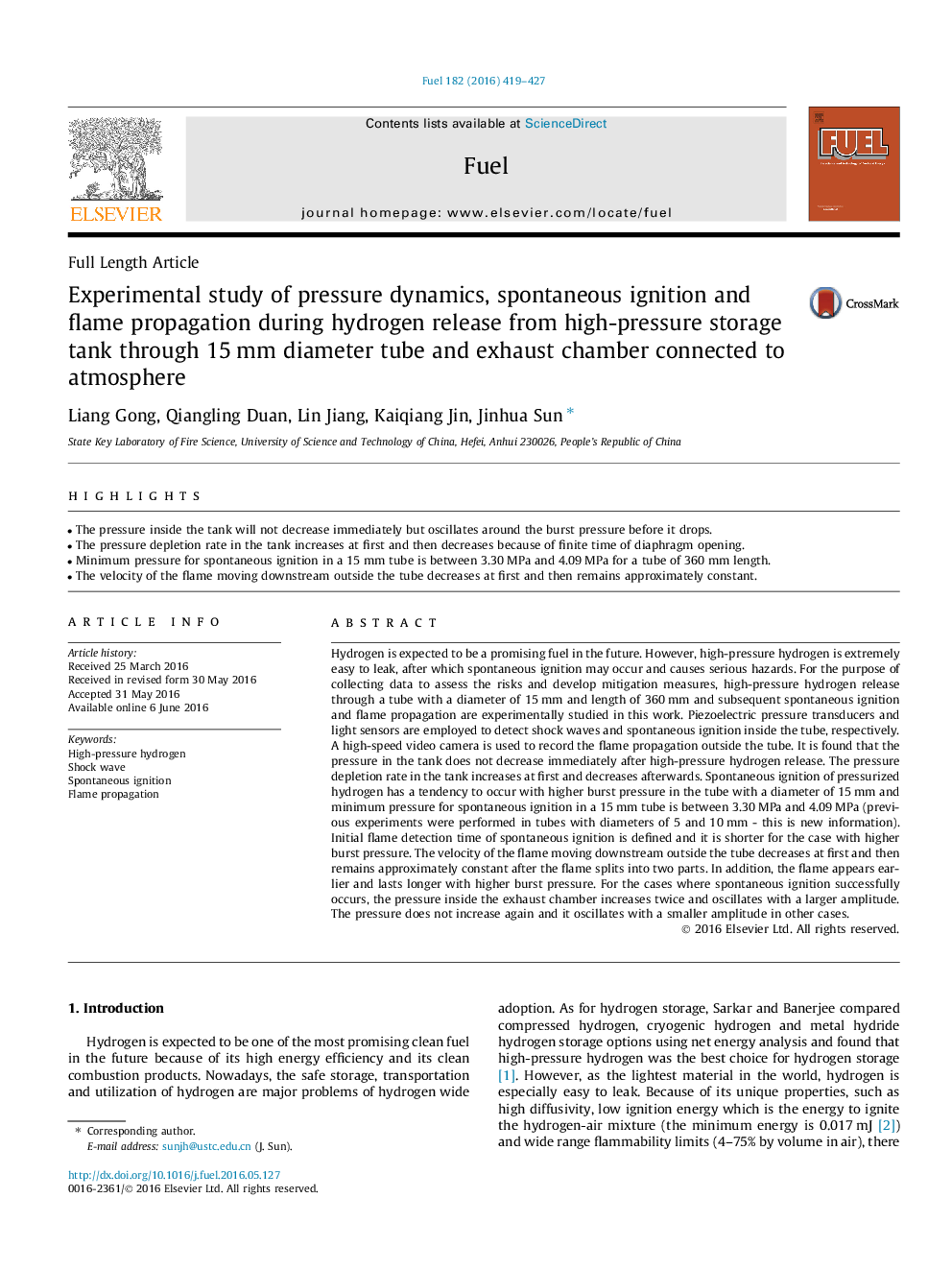| کد مقاله | کد نشریه | سال انتشار | مقاله انگلیسی | نسخه تمام متن |
|---|---|---|---|---|
| 6633466 | 461090 | 2016 | 9 صفحه PDF | دانلود رایگان |
عنوان انگلیسی مقاله ISI
Experimental study of pressure dynamics, spontaneous ignition and flame propagation during hydrogen release from high-pressure storage tank through 15Â mm diameter tube and exhaust chamber connected to atmosphere
ترجمه فارسی عنوان
مطالعه تجربی از پویایی فشار، سوزش خود به خود و انتشار شعله در هنگام خروج هیدروژن از مخزن ذخیره سازی فشار بالا از طریق لوله قطر 15 میلیمتر و لوله اگزوز و محفظه اتمسفر به اتمسفر
دانلود مقاله + سفارش ترجمه
دانلود مقاله ISI انگلیسی
رایگان برای ایرانیان
کلمات کلیدی
فشار بالا هیدروژن موج شوک، سوزش خود بخود، انتشار شعله،
موضوعات مرتبط
مهندسی و علوم پایه
مهندسی شیمی
مهندسی شیمی (عمومی)
چکیده انگلیسی
Hydrogen is expected to be a promising fuel in the future. However, high-pressure hydrogen is extremely easy to leak, after which spontaneous ignition may occur and causes serious hazards. For the purpose of collecting data to assess the risks and develop mitigation measures, high-pressure hydrogen release through a tube with a diameter of 15Â mm and length of 360Â mm and subsequent spontaneous ignition and flame propagation are experimentally studied in this work. Piezoelectric pressure transducers and light sensors are employed to detect shock waves and spontaneous ignition inside the tube, respectively. A high-speed video camera is used to record the flame propagation outside the tube. It is found that the pressure in the tank does not decrease immediately after high-pressure hydrogen release. The pressure depletion rate in the tank increases at first and decreases afterwards. Spontaneous ignition of pressurized hydrogen has a tendency to occur with higher burst pressure in the tube with a diameter of 15Â mm and minimum pressure for spontaneous ignition in a 15Â mm tube is between 3.30Â MPa and 4.09Â MPa (previous experiments were performed in tubes with diameters of 5 and 10Â mm - this is new information). Initial flame detection time of spontaneous ignition is defined and it is shorter for the case with higher burst pressure. The velocity of the flame moving downstream outside the tube decreases at first and then remains approximately constant after the flame splits into two parts. In addition, the flame appears earlier and lasts longer with higher burst pressure. For the cases where spontaneous ignition successfully occurs, the pressure inside the exhaust chamber increases twice and oscillates with a larger amplitude. The pressure does not increase again and it oscillates with a smaller amplitude in other cases.
ناشر
Database: Elsevier - ScienceDirect (ساینس دایرکت)
Journal: Fuel - Volume 182, 15 October 2016, Pages 419-427
Journal: Fuel - Volume 182, 15 October 2016, Pages 419-427
نویسندگان
Liang Gong, Qiangling Duan, Lin Jiang, Kaiqiang Jin, Jinhua Sun,
